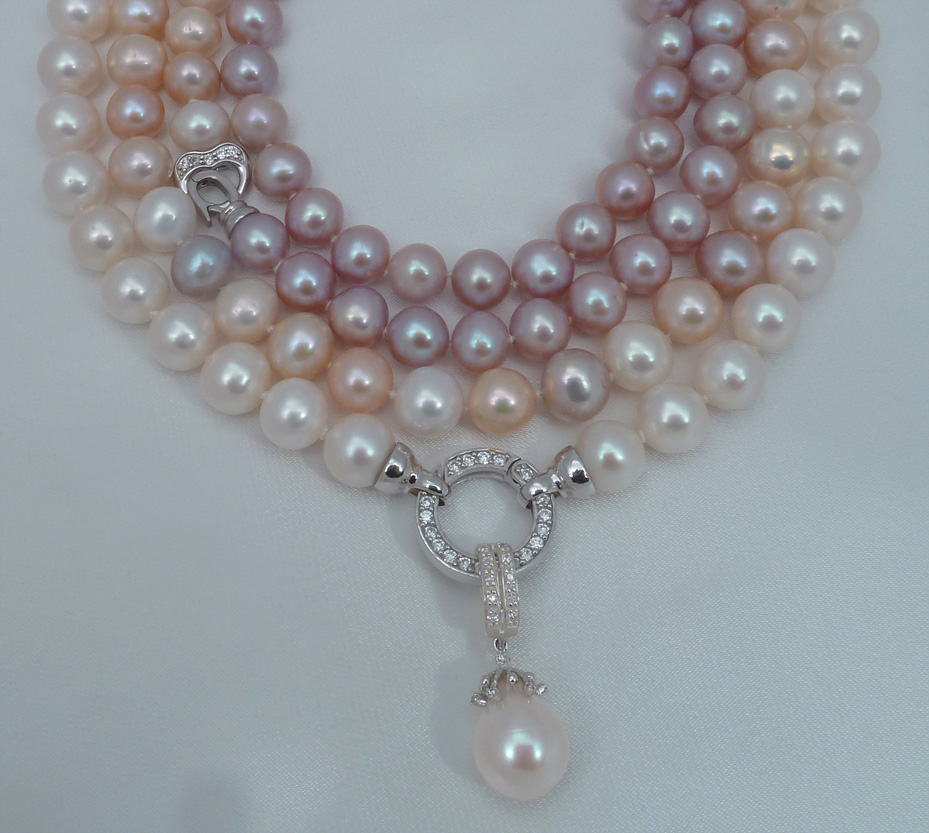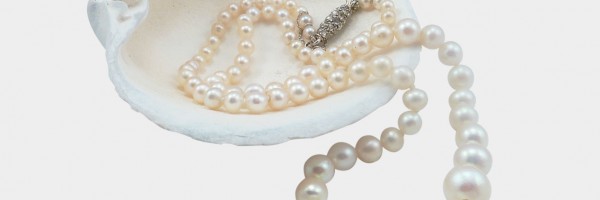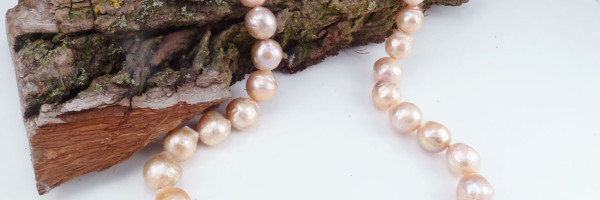
We know about different types of pearls. Among these, Chinese cultured freshwater pearls have become extremely popular. These pearls rival the most expensive and beautiful pearls. At present, they rival natural pearls and saltwater pearls. Cultured freshwater pearls from China may be a great alternative for both Akoya pearls and South Sea pearls. Actually, the latter are gorgeous, yet much more expensive than freshwater pearls.
Today, Chinese freshwater pearls may surpass other types of pearl in their quality. They display the perfection of shape and luster. Often, they demonstrate a palette of amazingly interesting colors, intense and vibrant. Moreover, they are much more affordable.
As a matter of fact, the majority of the Chinese freshwater pearls are tissue-nucleated. They are 100% nacre. Often they manifest extremely high luster and iridescence, or play of color. Being pure nacre, they will last for generations. They remain beautiful and lustrous. But you should know how to take care of pearl jewelry. This variety of shapes and colors is astonishing. As well, even large cultured freshwater pearls, reaching 16 mm and even bigger, may be found in the market today. Of course, high-quality cultured pearls of this size are rare . As far as we know, cultured freshwater pearls having diameter up to 21 mm have been found. Obviously, such large pearls are exceptional.
About freshwater pearls
Why? A tissue-nucleated freshwater cultured pearl is grown differently than a saltwater cultured pearl, e.g. Akoya pearls. A tiny piece of mantle tissue is inserted in the mollusc triggering a nacre secretion. Produced layers of nacre cover the tissue reproducing its shape. But in the case of freshwater cultured pearls, there is no round bead nucleus that is used in culturing the saltwater pearls. Thus, there is a high probability that the resulting pearl will not be round.
Moreover, the longer a pearl stays in the mollusc and the larger the pearl becomes, the higher the chance is that the layers of forming nacre will not be perfectly uniform, this or that type of distortion or defect may occur. Again, a chance that a high quality large round pearl will be harvested is pretty low. It is not surprising that a cultured freshwater pearl that is large and perfect will fetch a very high price – a factor of rarity is one of the most important in price formation in jewelry.
In spite of all these difficulties, using know-hows, their experience and expertise, the Chinese pearl farmers manage to grow large and round freshwater cultured pearls!
In 2014, China produced about 1,200 tons of freshwater cultured pearls. Which is less than 1,500 tons in 2010. This demonstrates that the Chinese farmers strive for quality and the quality of the Chinese freshwater pearls among different types of pearls continues to improve. Which is a good sign.



